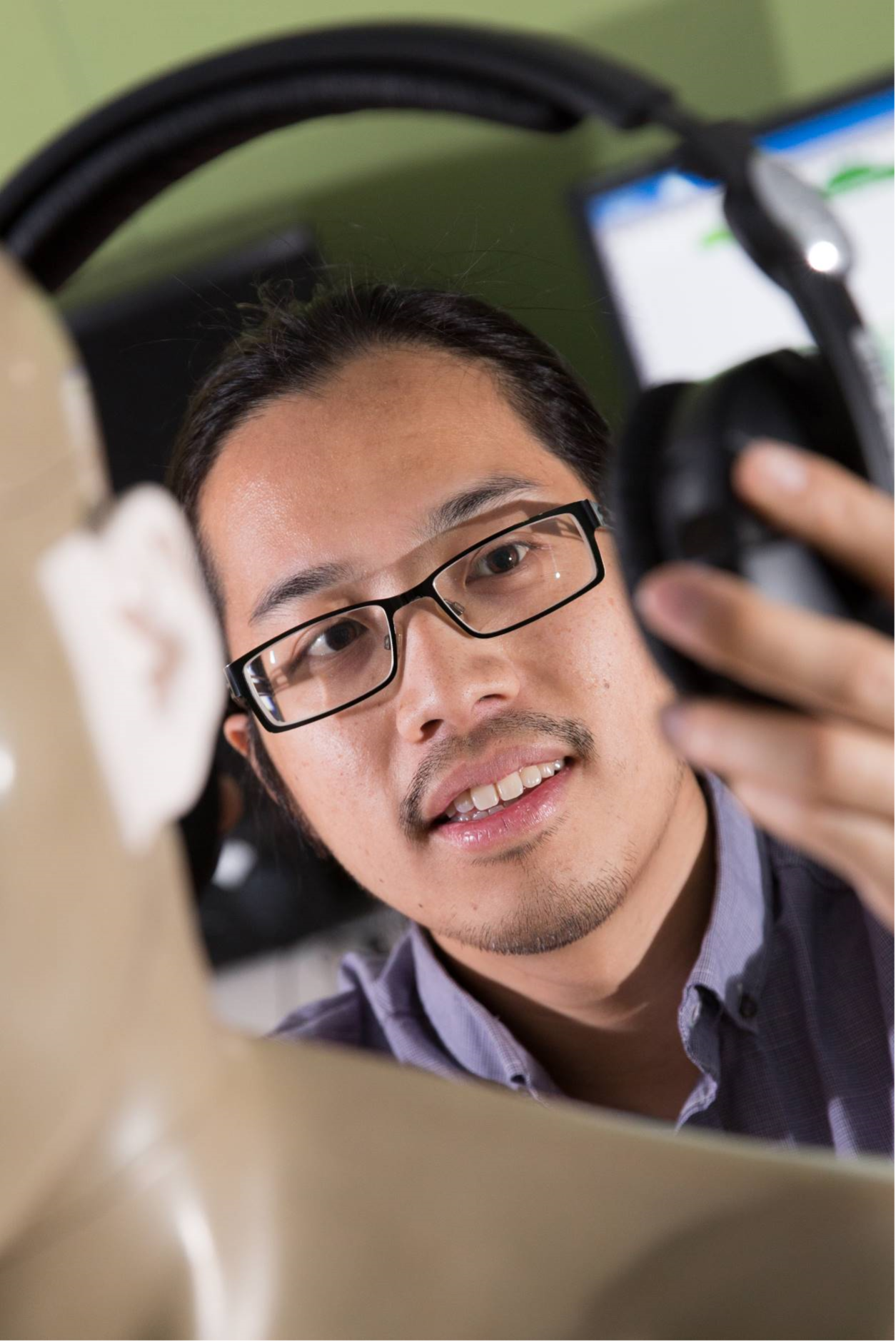Imagine you’re in a busy café talking with a friend. You want to focus on their voice and the conversation, but there is noise all around you. There’s the hum of a nearby refrigerator, the barista banging away at the coffee machine, someone nearby typing busily on their laptop and everybody is chatting.
Even with a cochlear implant, it takes a lot of effort to focus on a conversation while all these sounds are around you.
But, according to research, there is a way to help you listen in noisy environments: music training.
‘Music training may improve the auditory system to make it easier to listen in these noisy, disruptive environments,’ says Dr Chi Yhun Lo PhD*, a researcher in the field of auditory training for people with hearing loss.
For example, evidence shows that professionally trained musicians with typical hearing are excellent listeners, particularly in noisy environments.1
Other research has shown that, for children with cochlear implants or hearing aids, a 12-week music program helped them improve in two key areas: speech-in-noise and timbre perception.2
‘Timbre is the musical term that describes the texture of sound. It’s the reason why a violin sounds different to a flute, or how our voices are all unique,’ says Dr Lo. The children who improved in their timbre perception tended to have better speech-in-noise scores too.’ 2
Now, imagine we’re back in the café. How would better timbre perception help?
‘It assists by helping you identify and separate all the sounds from each other, so you can focus on what you want to hear, as opposed to the sounds that are just noise,’ says Dr Lo.
He says music is like a form of brain training. ‘While most people often think of music as an art form for your ears, it is really a multisensory experience for the brain.’
So how can people with cochlear implants use music to help them listen?
Dr Lo says singing is probably a great choice for speech perception.3,4
Variety is important, too. ‘Music is complex and multi-layered, so target everything—pitch, rhythm, timbre, and add the element of social participation too. The goal is to utilise and activate as many brain regions and networks as you can.’
You can pair reading notation with playing, combine singing with dancing, watch music videos with transcribed lyrics, or connect with others through a choir or band.
‘I think effective training always starts with fewer layers and more accessibility, and then you work your way up,’ says Dr Lo.
‘Consider playing a piano. You sit down in front of the sheet music and coordinate your fingers to what your eyes are telling you to play. Every note triggers a sensation of sound, and your ears and brain provide feedback, like “that’s the right note” or “nope — that one didn’t sound so good”.’
‘Next, go to a higher level and remove that sheet music. Now, you require the memory of a song you know, or you might get creative and compose a new song. Bring in some fellow musicians, and now we have a social experience that requires shared coordination and cooperation.’
Dr Lo says that, like any new skill, music training requires time and patience. ‘The more you put in, the more you’re probably going to get out. But don’t stress about being able to play in-tune and in-key. Instead, focus on the fun!’
Try our free music rehabilitation app Bring Back the Beat
*Dr Chi Yhun Lo is a paid consultant to Cochlear Limited.
References
- Coffey EBJ, Mogilever NB, Zatorre RJ. Speech-in-noise perception in musicians: a review. Hear Res. 2017 Sept; 352:49–69.
- Lo CY, Looi V, Thompson WF, et al. Music training for children with sensorineural hearing loss improves speech-in-noise perception. J Speech Lang Hear Res. 2020;63:1990–2015.
- Nie Y, Galvin JJ, Morikawa M, et al. Music and Speech Perception in Children Using Sung Speech. Trends Hear. 2018; 22: 1–16
- Torppa R, Faulkner A, Kujala T, et al. Developmental links between speech perception in noise, singing, and cortical processing of music in children with cochlear implants. Music Perception. 2018; 36: 156–174.




